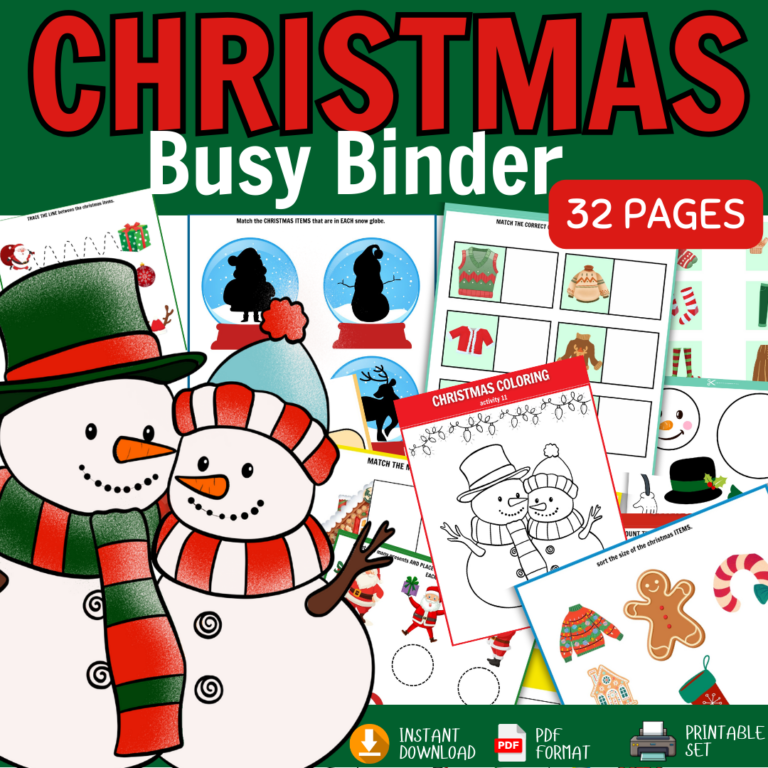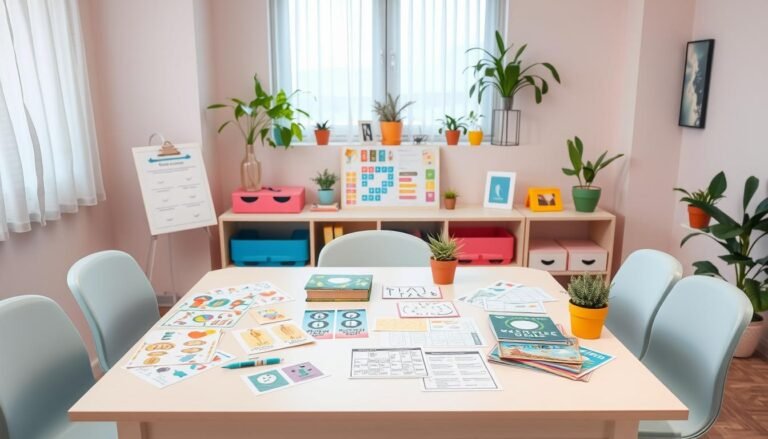Did you know that 95% of ESL teachers report increased student engagement when using interactive games in their lessons? As a new ESL instructor, I’ve discovered that incorporating fun activities is key to successful language learning. Let’s dive into some exciting esl activities for beginner teachers that will transform your classroom!
When I first started teaching ESL, I was overwhelmed by the challenge of keeping students interested. But I quickly learned that the right teaching strategies for ESL beginners can make all the difference. From vocabulary-building exercises to interactive speaking activities, there’s a world of engaging options at our fingertips.
One game that’s been a hit in my classes is “Board Race.” It works wonders for students aged 7 to 25, proving its versatility across different age groups. Another favorite is “Hot Seat,” which never fails to get students of all levels excited about learning English.
For younger learners, I’ve found “Simon Says” and “Hangman” to be particularly effective. These games not only teach language skills but also keep the energy high in the classroom. And let’s not forget “Pictionary,” which is a blast for all ages but especially popular with the little ones.
Key Takeaways
- Interactive games boost student engagement in ESL classes
- Activities like “Board Race” and “Hot Seat” work well for various age groups
- “Simon Says” and “Hangman” are perfect for young learners
- Incorporating games helps build vocabulary and language skills
- Customizing activities to fit different proficiency levels is crucial
Why ESL Activities Are Important for Beginners
As an ESL teacher, I’ve seen firsthand how crucial activities are for beginners. They’re not just fun and games – they’re powerful tools for learning. When I plan my beginner ESL lesson plans, I always include a mix of engaging activities to keep students interested and motivated.
Enhancing Language Skills
ESL games for beginners are fantastic for boosting language skills. They help students practice vocabulary, grammar, and pronunciation in a relaxed setting. I’ve noticed that when students play games, they often forget they’re learning and just enjoy using English.
Building Confidence
Activities create a safe space for beginners to make mistakes and learn from them. This builds confidence over time. In my classes, I’ve seen shy students blossom through role-playing exercises and group discussions.
Encouraging Participation
Interactive activities get everyone involved. Even quiet students find ways to participate. For example, using Flipgrid lets students share video recordings, which is great for those who are hesitant to speak up in class.
| Activity Type | Benefits |
|---|---|
| Scavenger Hunt | Helps students get to know each other |
| “It’s in the Bag” | Fosters connections among students |
| Heart Maps | Increases engagement in writing |
By incorporating diverse activities in my beginner ESL lesson plans, I can cater to different learning styles and keep students engaged throughout the lesson. It’s amazing to see how these ESL games for beginners can transform a classroom into a lively, supportive learning environment.
Engaging Icebreakers to Start Classes
As an ESL teacher, I love using icebreakers to kickstart my lessons. These fun activities are perfect for beginner ESL conversation practice and set the tone for an engaging class. Let’s explore some effective teaching strategies for ESL beginners that’ll get your students talking and feeling comfortable from day one.

Name Games
Name games are a great way to help students remember each other’s names while practicing English. I often use the “Adjective Name Game” where students introduce themselves with an adjective that starts with the same letter as their name. It’s a simple yet effective beginner ESL conversation practice that gets everyone talking.
Two Truths and a Lie
This classic icebreaker works wonders for teaching strategies for ESL beginners. Students share three statements about themselves – two truths and one lie. Their classmates then guess which statement is false. It’s an excellent way to practice speaking and listening skills while getting to know each other better.
Find Someone Who
For this activity, I give students a list of characteristics or experiences. They then mingle, asking questions to find classmates who match each description. It’s a fantastic beginner ESL conversation practice that encourages students to form questions and engage in real conversations.
These icebreakers not only help students feel more comfortable but also provide valuable speaking practice. By incorporating these teaching strategies for ESL beginners, you’ll create a positive learning environment where students are excited to participate and improve their English skills.
Creative Vocabulary-Building Exercises
I love using creative vocabulary-building exercises in my ESL classes. These beginner ESL vocabulary activities make learning fun and effective. Let’s explore some exciting ways to boost your students’ word power!
Picture Flashcards
Picture flashcards are a classic tool for teaching new words. I create colorful cards with images on one side and the corresponding word on the other. Students can practice alone or in pairs, matching pictures to words. This visual approach helps learners connect concepts with vocabulary quickly.
Vocabulary Matching Games
ESL games for beginners are a hit in my classroom. One favorite is the memory game. I lay out cards face-down, with words and their definitions or pictures. Students take turns flipping pairs, trying to find matches. It’s a fun way to reinforce vocabulary while promoting healthy competition.
Word Association Activity
To deepen understanding, I use word association activities. Students brainstorm related words or phrases for a given vocabulary item. For example, if the word is “beach,” they might list “sand,” “waves,” and “sunscreen.” This exercise helps build semantic networks and improves recall.

| Activity Type | Number of Activities | Benefits |
|---|---|---|
| Visual Aids | 6 | Enhances memory retention |
| Collaborative | 9 | Improves communication skills |
| Technology-based | 4 | Increases engagement |
| Games | 5 | Makes learning enjoyable |
By incorporating these creative exercises, you’ll see your students’ vocabulary grow rapidly. Remember, the key is to keep activities varied and engaging for the best results in your ESL classroom.
Interactive Speaking Activities for Beginners
I love using interactive speaking activities in my beginner ESL conversation practice. These activities are key to building confidence and fluency in new English learners. Let’s explore some fun and effective teaching strategies for ESL beginners that focus on speaking skills.
Role-Playing Scenarios
Role-playing is a fantastic way to get students talking. I set up simple scenarios like ordering food at a restaurant or asking for directions. This helps students practice real-life conversations in a safe environment. It’s amazing to see how quickly they gain confidence!
Describing Pictures
I often use picture description activities to boost vocabulary and speaking skills. I show students colorful images and ask them to describe what they see. This exercise encourages them to use descriptive language and practice new words they’ve learned.

Group Discussions
Group discussions on simple topics are great for encouraging students to express opinions and ask questions. I start with easy themes like favorite foods or hobbies. This improves their overall communication skills and helps them feel more comfortable speaking English.
| Activity | Benefits | Difficulty Level |
|---|---|---|
| Role-Playing | Builds confidence, practices real-life scenarios | Easy to Moderate |
| Describing Pictures | Enhances vocabulary, improves descriptive skills | Easy |
| Group Discussions | Encourages opinion sharing, improves fluency | Moderate |
By incorporating these interactive speaking activities, I’ve seen remarkable progress in my students’ language skills. Remember, the key is to keep it fun and engaging while providing a supportive environment for beginner ESL conversation practice.
Fun Listening Activities to Enhance Comprehension
Listening activities are vital for beginner ESL lesson plans. I’ve discovered some exciting ESL games for beginners that boost comprehension skills while keeping students engaged.
Listening for Key Words
One effective technique is listening for key words. I ask students to focus on specific terms in audio clips or conversations. This sharpens their ability to pick out important information. For example, I might play a weather forecast and have them listen for words like “sunny” or “rainy”.
Audio Clips with Follow-Up Questions
Using audio clips followed by questions is another great strategy. I select short recordings suitable for beginners and prepare questions to check understanding. This approach encourages active listening and helps students process what they’ve heard.
Song Lyric Gap Fill
Song lyric gap fill exercises are a hit with my students. I choose simple songs with clear lyrics and create worksheets with missing words. As they listen, students fill in the blanks. It’s a fun way to combine listening practice with vocabulary building.
These activities make learning enjoyable and help students improve their comprehension skills. By incorporating varied listening exercises into beginner ESL lesson plans, I’ve seen significant progress in my students’ language abilities.
Writing Exercises That Spark Creativity
I love using creative writing exercises to help my ESL beginners improve their skills. These activities make learning fun and encourage self-expression. Let’s explore some exciting beginner ESL writing prompts that foster creativity and boost language proficiency.
Journaling Prompts
Journaling is a great way to get students writing regularly. I provide simple prompts like “My favorite day” or “If I could travel anywhere…” These beginner ESL writing prompts allow students to practice vocabulary and sentence structure in a low-pressure way.
Collaborative Story Writing
Group storytelling is one of my favorite teaching strategies for ESL beginners. I start a story with a sentence, then each student adds their own. This activity builds teamwork and helps students practice using connecting words and phrases.

Picture Description Writing
Visual prompts work wonders for developing descriptive language skills. I show an interesting image and ask students to write about what they see. This exercise encourages the use of adjectives and helps expand vocabulary in a fun, engaging way.
| Writing Activity | Benefits |
|---|---|
| Journaling | Regular practice, self-expression |
| Collaborative Story | Teamwork, sentence structure |
| Picture Description | Descriptive language, vocabulary |
These creative exercises transform writing from a chore into an adventure. By incorporating these teaching strategies for ESL beginners, I’ve seen my students’ confidence and skills grow tremendously.
Using Games to Make Learning Fun
Games are a fantastic way to spice up ESL classes. I’ve found that incorporating ESL games for beginners not only makes learning enjoyable but also boosts engagement and motivation. Let’s explore some exciting beginner ESL vocabulary activities that can transform your classroom into a fun learning zone.
Vocabulary Charades
Vocabulary charades is a hit among my students. It’s simple yet effective. Students act out words while their classmates guess. This game reinforces word meaning through physical movement, making it easier for beginners to remember new vocabulary.
Bingo with New Words
Bingo is a classic that never fails to excite. I create custom bingo cards using recently learned words. As I call out definitions, students mark off the corresponding words on their cards. It’s a great way to practice word recognition and recall.
Pictionary for Vocabulary Review
Pictionary combines drawing skills with word recognition. Students draw words or phrases while their teammates guess. This game is perfect for visual learners and helps reinforce vocabulary in a fun, interactive way.
These games offer more than just fun. They help build problem-solving skills, develop situational learning, and improve language ability for both native and foreign English speakers. By incorporating these beginner ESL vocabulary activities, I’ve seen increased interaction, energy levels, and confidence among my students.
| Game | Skills Practiced | Benefits |
|---|---|---|
| Vocabulary Charades | Speaking, Listening | Physical reinforcement of word meanings |
| Bingo with New Words | Listening, Reading | Word recognition and recall |
| Pictionary | Speaking, Listening, Visual Skills | Vocabulary reinforcement through visual cues |
Remember, these games can be easily adapted for different age groups and skill levels. By incorporating these fun ESL games for beginners, you’ll create an engaging learning environment that your students will love.
Incorporating Technology in ESL Teaching
Technology has revolutionized beginner ESL lesson plans. I’ve found that integrating digital tools into teaching strategies for ESL beginners can significantly boost engagement and learning outcomes. Let’s explore some effective ways to harness technology in the ESL classroom.
Language Learning Apps
Language learning apps are game-chanchers for ESL students. Duolingo, with its 40 language offerings, provides a fun, interactive way to practice English outside the classroom. I often recommend Memrise for its user-generated flashcards and mnemonic techniques, which help students retain vocabulary more effectively.
Online Quizzes and Interactive Exercises
Online platforms offer a wealth of resources for beginner ESL lesson plans. I love using Newsela, which provides texts at five different reading levels, perfect for adapting to various student abilities. ThinkCERCA is another fantastic tool, offering leveled texts with scaffolding and audio versions, which is incredibly helpful for students still developing their reading skills.
Virtual Language Exchange
Virtual language exchange programs are invaluable for real-world practice. Busuu stands out by connecting learners with native speakers. This authentic interaction is crucial for developing conversational skills and cultural understanding. I’ve seen remarkable progress in students who regularly engage in these exchanges.
By incorporating these tech tools into teaching strategies for ESL beginners, we can create more dynamic, personalized learning experiences. The key is to balance technology use with traditional methods to ensure well-rounded language development.
Tips for Making Activities Successful
As I’ve developed beginner ESL lesson plans over the years, I’ve learned that success hinges on adapting to student needs. Teaching strategies for ESL beginners should be flexible and responsive. Let’s explore some key tips to make your ESL activities truly effective.
Adapting to Student Levels
When crafting beginner ESL lesson plans, it’s crucial to meet students where they are. I always assess my students’ current abilities and tailor activities accordingly. This approach, backed by over 20 years of experience in education, ensures that each learner feels challenged yet supported.
Creating a Comfortable Environment
A welcoming classroom is vital for language learning. I incorporate students’ languages and cultures by posting signs in their native tongues and introducing diverse books. This strategy, championed by award-winning educators like Cindy Garcia, a bilingual educator with 14 years of experience, fosters a sense of belonging and encourages participation.
Encouraging Feedback and Adaptation
I regularly seek input from my students to refine my teaching strategies for ESL beginners. This feedback loop, recommended by experts like Deedy Camarena, coordinator for English-language development, helps me adjust my approach. By staying open to change, I ensure my beginner ESL lesson plans remain engaging and effective for all learners.






